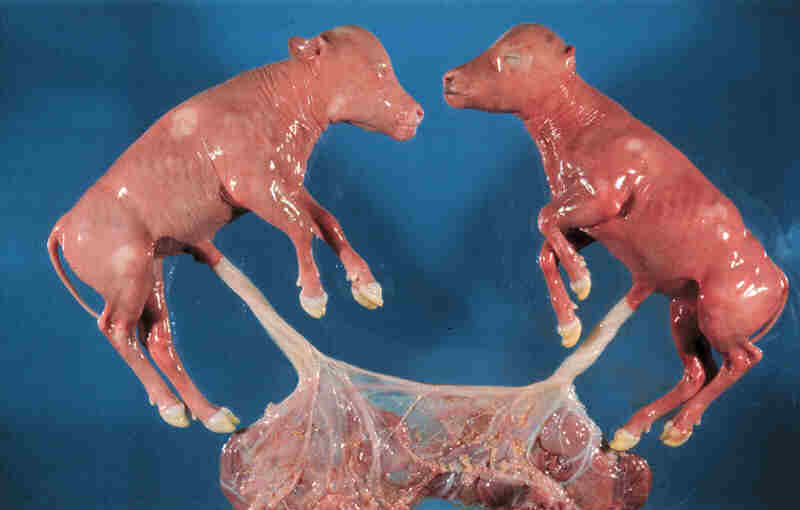| |
What is freemartinism?
Freemartinism is one of the most severe forms of sexual abnormality among cattle. It causes infertility in the female calf born with a male twin.
How does this occur?
Freemartinism occurs when a female twin shares the uterus with a male. The placental membranes connect the fetus to the dam are shared, and the placental fluids are exchanged between the two fetuses. The exchange of fluid and blood between the two calves mixes the antigens responsible for carrying the unique sex characteristics of each calf. The twins develop with some sex characteristics of both the male and female.
This transfer of hormones and antigens causes the female's reproductive tract to be severely underdeveloped, and in some cases they express characteristics of a male reproductive system. Often the ovaries are underdeveloped and are not capable of producing eggs. The uterus is also underdeveloped, and the reproductive tract does not supply sufficient hormones necessary to maintain a pregnancy.

Photo Credit: Robert A. Foster, Department of Pathobiology,
Ontario Veterinary College, University of Guelph.
Is the male twin affected at all by this condition?
Reduced fertility sometimes occurs in the male twin, but in ninety percent of the cases the female twin is completely infertile.
What causes freemartinism?
The exact cause is not fully understood. However, the reproductive organs of the male fetus develop earlier than those of a female fetus, which results in the female genitalia being affected. The presence of male hormones impairs the development of the female reproductive system. The fetus is genetically female, but male hormones dominate its reproductive system.
Can freemartinism be seen externally?
Most often the external genitalia of the female appears normal, but the internal organs are underdeveloped. In some cases, the female genitalia may appear to be male. For example the vulva may be normal, but there may be large amounts of hair present or the udder will not be fully developed and sometimes it is not noticeable at first glance.
Can freemartinism be prevented?
Freemartinism cannot be prevented. It is not a genetic trait that is passed on through generations; it occurs randomly from the conception of two embryos instead of one.
What are the economic implications?
Detection and diagnosis of a freemartin is critical from an economic standpoint. A female twin born with a male twin has no reproductive value, it is important not to spend time and money preparing the heifer to go into your breeding herd.
Prepared by Barry Yaremcio, Alberta Ag-Info Centre, Alberta Agriculture & Forestry
|
|